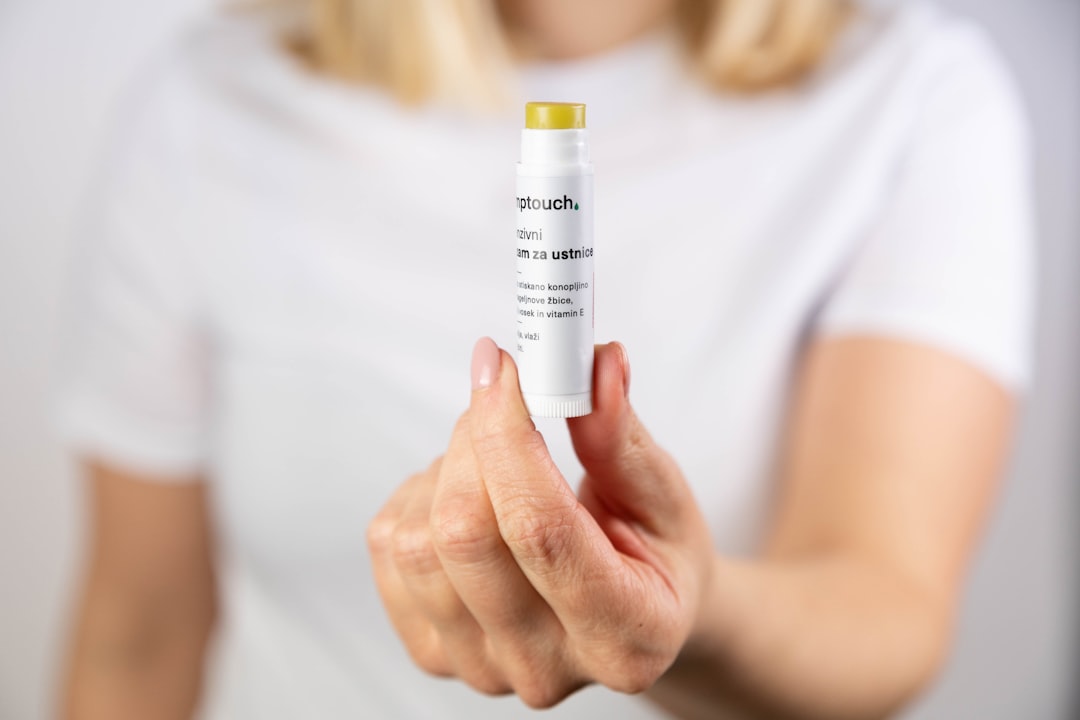Laser hair removal is a popular cosmetic procedure that utilizes concentrated beams of light to target and eliminate unwanted hair. The process works by emitting a specific wavelength of light that is absorbed by the pigment in the hair follicles. This absorption generates heat, which damages the follicles and inhibits future hair growth.
As you consider this treatment, it’s essential to understand how it works and what to expect during your sessions. During a typical session, a trained technician will use a handheld device to deliver the laser light to the treatment area. You may feel a slight tingling sensation or a mild snapping feeling as the laser targets each hair follicle.
The procedure is generally quick, with small areas taking only a few minutes and larger areas requiring more time. Most individuals find the process tolerable, especially when compared to traditional hair removal methods like waxing or shaving. Understanding the science behind laser hair removal can help you feel more confident as you embark on this journey toward smoother skin.
Key Takeaways
- Laser hair removal targets hair follicles with concentrated light to inhibit future hair growth
- Shave the treatment area before the appointment and avoid sun exposure and tanning beds
- Apply aloe vera or cold compress to soothe any discomfort and redness after treatment
- Use sunscreen and avoid sun exposure to prevent skin damage and hyperpigmentation
- Follow up treatments may be necessary to maintain hair reduction and consult with a professional for personalized advice
- Potential risks include skin irritation, pigment changes, and rare cases of scarring
- Avoid plucking or waxing between treatments and follow aftercare instructions for best results
Preparing for Laser Hair Removal Treatment
Preparation is key to ensuring a successful laser hair removal experience. Before your first appointment, you should schedule a consultation with your technician to discuss your medical history, skin type, and hair color. This information will help them determine the most effective laser settings for your specific needs.
During this consultation, you can also ask any questions you may have about the procedure, which can help alleviate any concerns you might be feeling. In the weeks leading up to your treatment, it’s important to avoid sun exposure and tanning beds, as tanned skin can increase the risk of complications during the procedure. Additionally, refrain from waxing or plucking hair in the treatment area for at least four weeks prior to your appointment.
Shaving is usually recommended instead, as it leaves the hair follicle intact while removing the hair above the skin’s surface. This preparation will ensure that the laser can effectively target the hair follicles during your session.
Post-Treatment Care Instructions

After your laser hair removal session, following proper post-treatment care is crucial for achieving optimal results and minimizing any potential side effects. Initially, you may notice some redness or swelling in the treated area, which is completely normal.
This can help reduce inflammation and provide relief from any discomfort you may experience. In addition to cooling your skin, it’s essential to keep the treated area clean and moisturized.
Applying a soothing lotion or aloe vera gel can also help keep your skin hydrated and promote healing. Remember to avoid any products containing retinoids or alpha hydroxy acids for several days, as these can irritate your skin and hinder recovery.
Managing Discomfort and Redness
| Product | Discomfort Relief Rating | Redness Reduction Rating |
|---|---|---|
| Product A | 4.5 | 4.0 |
| Product B | 4.0 | 3.5 |
| Product C | 4.8 | 4.2 |
While many people tolerate laser hair removal well, some may experience discomfort or redness following their sessions. If you find yourself feeling uncomfortable, over-the-counter pain relievers such as ibuprofen or acetaminophen can help alleviate any pain or swelling. Always follow the recommended dosage instructions on the packaging and consult with your technician if you have any concerns about taking medication.
Redness is a common side effect that typically subsides within a few hours to a couple of days after treatment. To manage this redness effectively, avoid hot showers, saunas, or strenuous exercise for at least 24 hours post-treatment. These activities can exacerbate inflammation and prolong redness.
Instead, opt for cool showers and gentle activities that won’t put additional stress on your skin.
Protecting the Skin from Sun Exposure
One of the most critical aspects of post-laser hair removal care is protecting your skin from sun exposure. After treatment, your skin may be more sensitive to UV rays, making it essential to take precautions to prevent sunburn or pigmentation changes. For at least four weeks following your session, avoid direct sunlight whenever possible and wear protective clothing when outdoors.
Applying a broad-spectrum sunscreen with an SPF of 30 or higher is vital for safeguarding your skin from harmful UV rays. Make it a habit to reapply sunscreen every two hours if you’re spending extended periods outside. This proactive approach will not only protect your skin but also enhance the results of your laser hair removal treatment by preventing any potential complications related to sun exposure.
Long-Term Maintenance and Follow-Up Treatments

Achieving long-lasting results from laser hair removal often requires multiple sessions spaced several weeks apart. The number of treatments needed varies depending on factors such as hair type, color, and the area being treated. Typically, most individuals require between three to six sessions for optimal results.
Your technician will develop a personalized treatment plan based on your unique needs and goals. After completing your initial series of treatments, you may still need occasional maintenance sessions to keep unwanted hair at bay. These follow-up treatments are usually less frequent and can be scheduled every six months to a year, depending on how your body responds to the procedure over time.
Staying committed to this maintenance schedule will help ensure that you enjoy smooth skin for years to come.
Potential Risks and Side Effects
While laser hair removal is generally considered safe, it’s essential to be aware of potential risks and side effects associated with the procedure. Some individuals may experience temporary side effects such as redness, swelling, or mild discomfort in the treated area. These symptoms typically resolve within a few hours to a few days but can vary from person to person.
In rare cases, more severe side effects may occur, including blistering, scarring, or changes in skin pigmentation. To minimize these risks, it’s crucial to choose a qualified technician with experience in laser hair removal. They will be able to assess your skin type and hair color accurately and select the appropriate laser settings for your treatment.
Always communicate openly with your technician about any concerns you may have before undergoing the procedure.
Tips for Maximizing Results and Minimizing Complications
To maximize the results of your laser hair removal treatment while minimizing complications, there are several tips you can follow throughout the process. First and foremost, adhere strictly to your technician’s pre- and post-treatment care instructions. This includes avoiding sun exposure, using sunscreen diligently, and following any specific guidelines they provide regarding skincare products.
Additionally, maintaining realistic expectations is vital for your satisfaction with the results. Understand that while many people experience significant hair reduction after their treatments, complete hair removal may not be achievable for everyone due to factors such as hair color and thickness. Staying patient and committed to your treatment plan will ultimately lead to the best possible outcome.
In conclusion, laser hair removal can be an effective solution for those seeking a long-term method of hair reduction. By understanding the process, preparing adequately for treatments, and following post-care instructions diligently, you can enjoy smoother skin with minimal complications. Remember that communication with your technician is key; don’t hesitate to ask questions or voice concerns throughout your journey toward achieving beautiful results.
After getting laser hair removal on your legs, it is important to properly care for your skin to ensure the best results. One helpful resource for post-treatment care tips is the article on InLaserHairRemoval website. This article provides valuable information on how to soothe and protect your skin after laser hair removal, helping you achieve smooth and hair-free legs. For more information on laser hair removal treatments and aftercare, you can also visit InLaserHairRemoval website or contact their team directly through their contact page.
FAQs
What is laser hair removal for legs?
Laser hair removal for legs is a cosmetic procedure that uses a concentrated beam of light (laser) to remove unwanted hair from the legs. The laser targets the pigment in the hair follicles, damaging them and inhibiting future hair growth.
What is the best aftercare for laser hair removal on the legs?
After laser hair removal on the legs, it is important to keep the treated area clean and moisturized. Avoid sun exposure and use sunscreen to protect the skin. It is also recommended to avoid hot baths, saunas, and tight clothing for a few days after the treatment.
How long does it take for the skin to heal after laser hair removal on the legs?
The skin may be slightly red and swollen immediately after laser hair removal on the legs, but this typically subsides within a few hours to a few days. Complete healing and results may take a few weeks, depending on the individual’s skin type and the intensity of the treatment.
Are there any potential side effects of laser hair removal on the legs?
Potential side effects of laser hair removal on the legs may include redness, swelling, and temporary discomfort. In rare cases, blistering, scarring, or changes in skin pigmentation may occur. It is important to follow the aftercare instructions provided by the treatment provider to minimize the risk of side effects.
How many sessions of laser hair removal are typically needed for the legs?
The number of laser hair removal sessions needed for the legs varies depending on individual factors such as hair color, skin type, and the desired results. On average, most people require 6-8 sessions spaced several weeks apart to achieve optimal results.






